As you already know, in the case of the genuine exhaust manifold the stress is on the cost, but the end result is bad.
How about M2-1028?
The M2-1028 is set up with a special engine body, so to speak it is a maker tuning model.
The exhaust manifold’s shape differs from the genuine one’s and its removal is difficult.
If we don’t lift the engine a bit, we cannot remove it!!
You can see how special the M2-1028 exhaust manifold's shape is.
Before removing the 1028 exhaust manifold, we have to remove the O2 sensor. If we don’t use special tools, we can easily damage the spring.

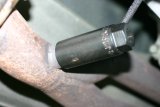
After the removal we apply a special chemical (aluminium powder) to the stud at the head’s side.
It acts like a kind of lubricant - it prevents the nut from sticking into the head because of high temperature.
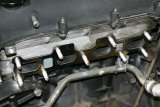
This time we compared it to Maruha’s VP-header and here we would like to present the results.
We set up the VP-header
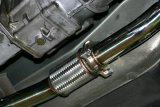
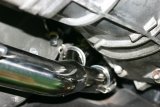
The suppressed venturi inside the inserted part and the bellows tube is the biggest characteristic of the VP-header.

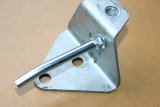
In front of the catalyst a special hanger has been installed.
Cracking can be prevented because there isn’t a bar welded inside the main pipe.
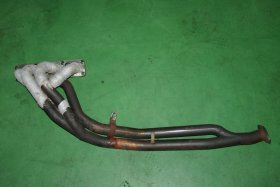
The 4-2-1 style is basically the same technique as in the case of the VP-header, however the pipe’s diameter is totally different. Pipe No.1 – 45mm; Pipe No.2 – 48.6mm; Pipe No.3 – 53.8mm.
The most special is the length of Pipe No.2. which is 75cm long.
The aim of this design is a middle rpm torque.
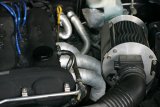
In the case of the VP-header the pipe’s diameter is: Pipe No.1 – 42.7mm, Pipe No.2 – 50.8mm, Pipe No.3 – 60.3mm.
Except pipe No.1 the pipes are thicker than in the case of 1028.
Its length is different too.
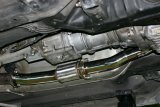
The engine and ECU are those of M2-1028, there is no change.
The catalyzer is made by Maruha.

In other words, not only the pipe’s shape, but the pipe’s diameter too influences the efficiency.
The venturi’s effect is big and in the case of a 150PS engine even with small venturi we can get at least 10PS more.
In the case of a 150PS engine by setting up the venturi inside the 60mm thick main pipe the VP-header has real effect.
What’s the situation in the case of high power cars?
Is the VP-header around the STD engine or light tuning engine ideal?
How is it in the case of an engine with big cubic capacity?
Here we will try to introduce the setup to the 2.1L engine.
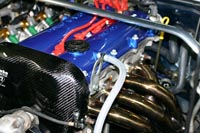
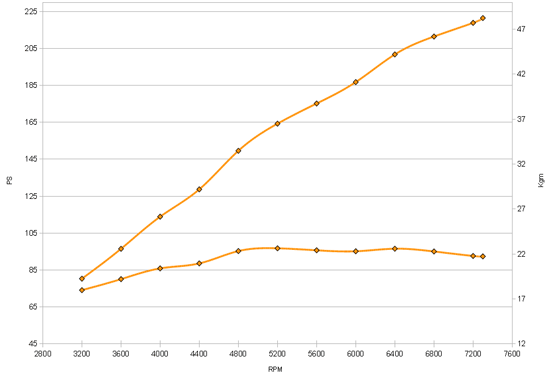
The cam is F-cam.
In the beginning our plan was a single manifold and for this reason we set up the engine with F-cam, but the intake at the high RPM area doesn't grow, that's why we installed a 4-throttle injection system.
Highest horsepower: 220ps/7300rpm
Highest torque: 22.7kgm/6500rpm
The torque brings its ability into full play at 6500rpm and from 3000rpm it keeps an 18kgm high torque.
As you can see it is an "accelerating fast engine".
Even in this case we set up a venturi to the VP-header.
If we set up a RACE spec high cam, aiming for power at high rpm, we can think of an efficient pattern without venturi too.
In this case the main point is the width of the relevant range.
It is efficient even with light tuning like in the case of genuine STD engine and F cam and even with 2.1L (220PS) high power version.
After seeing the results of these tests it is easy to understand, how good the efficiency of the VP-header is.
[home]